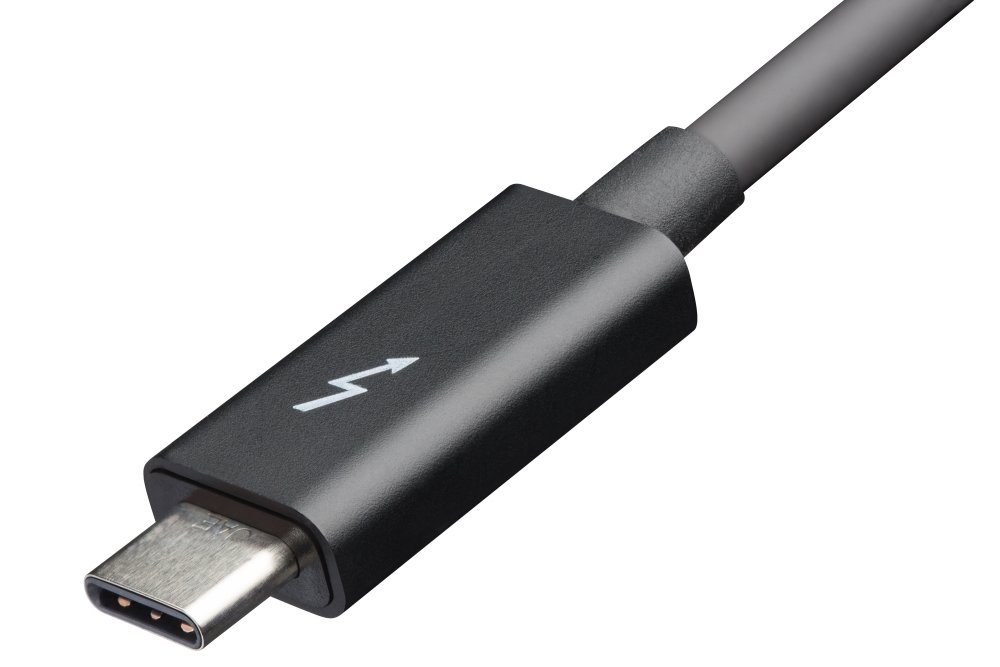 Thunderbolt is an often under appreciated connector. It originally started out as an optical connector called LightPeak developed by Intel but morphed into the Thunderbolt standard with the input from Apple, the company that primarily uses the interface. There are a few other PCs that offer it but generally only for those that consumers build themselves. The connector has offered some nice features and now Intel has announced the third version of the connector and it is a huge improvement but also likely going to cause confusion as well. So what exactly is changing and how might it impact computers in the coming years?
Thunderbolt is an often under appreciated connector. It originally started out as an optical connector called LightPeak developed by Intel but morphed into the Thunderbolt standard with the input from Apple, the company that primarily uses the interface. There are a few other PCs that offer it but generally only for those that consumers build themselves. The connector has offered some nice features and now Intel has announced the third version of the connector and it is a huge improvement but also likely going to cause confusion as well. So what exactly is changing and how might it impact computers in the coming years?
Switching to Type-C Connector
One thing that Thunderbolt has not done is introduce its own connector type. Instead, it has taken from other standards to do this. With the original Thunderbolt and Thunderbolt 2, it essentially used the DisplayPort and mini-DisplayPort connectors. That cable choice was an obvious fit because the DisplayPort design included a connector that could carry video signal as well as a side-band for data. This made it easy to adopt the cable so that Thunderbolt could carry the video and data signals.
For Thunderbolt 3, they are changing things up and this could be good or bad. Rather than continuing to use the DisplayPort connectors, they are switching over to the USB Type-C connectors. This has many advantages that I discussed in my . To briefly recap, the cable allows for a reversible connector that does not care which direction it is plugged in, offers greater data speeds than the existing USB cables and can also carry power.
What is it Capable Of?
Intel has put some pretty serious claims together regarding what Thunderbolt 3 can achieve. Namely, a single connector could theoretically carry 40Gbps of data across the cable. That is double the speeds of the existing Thunderbolt 2 and is four times the 10Gbps that the current USB 3.1 standards allow. In terms of video, this could translate into the ability to run two 4K displays at a full 60Hz. Just like the USB 3.1 power standards, Thunderbolt 3 also has the ability to provide upwards of 100 watts of power over the connector as well.
With all these capabilities, it is possible now to basically create a monitor that acts as a complete workstation that plugs into a laptop through a single cable. That cable would provide power to the laptop and it would also carry the video and data from the laptop to the monitor which then could have the peripheral ports for external devices. Will such a product come out? It is hard to say because ThunderBolt 2 had similar capabilities other than the power supply but the products never really materialized.
Thunderbolt 3’s Problems
Now the bad part is the confusion that the connector could likely carry. USB ports have generally been assumed by users to be for peripherals and generally data. Thunderbolt is both a video and data standard. The smaller size of the Thunderbolt 3 and the Type C connector could mean that it will be used on smaller laptops and tablet but it will require either active adapters to convert the signals to existing monitors or users will have to purchase a whole new monitor standard to effectively use it. Then there is the issue of distinguishing between the ports. Users may try to use Thunderbolt devices on USB 3.1 Type C ports and find that they either do not work or run at degraded performance because of the data restrictions.
The second problem is adoption of the Thunderbolt standards on computers. Apple will more than likely be the first company to actually use the standard on an upcoming computer. It is possible they may even announve a produce at the World Wide Developer Conference next week. The problem is that outside of Apple, it is not really been used. This is not likely to change in the near future. Most PC companies have been fairly reluctant to even start switching over to the new USB 3.1 ports but that will likely change with the next major hardware releases by Intel.
